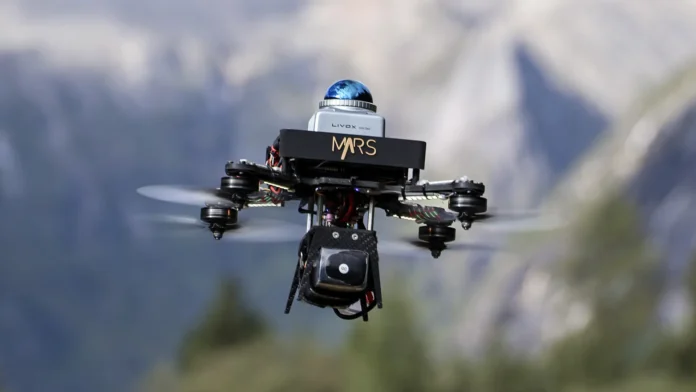In contrast to birds, which navigate unknown environments with exceptional pace and agility, drones usually depend on exterior steering or pre-mapped routes. Nonetheless, a groundbreaking growth by Professor Fu Zhang and researchers from the Division of Mechanical Engineering of College of Engineering on the College of Hong Kong (HKU), has enabled drones and micro air autos (MAVs) to emulate the flight capabilities of birds extra carefully than ever earlier than.
The workforce has developed the Security-Assured Excessive-Velocity Aerial Robotic (SUPER), able to flying at speeds exceeding 20 meters per second and avoiding obstacles as skinny as 2.5 millimeters – resembling energy strains or twigs – utilizing solely on onboard sensors and computing energy. With a compact design that includes a wheelbase of simply 280 mm and a takeoff weight of 1.5 kg, SUPER demonstrates distinctive agility, navigating dense forests at night time and elegantly avoiding skinny wires.
Professor Zhang describes this invention as a game-changer within the area of drone expertise, “Image a ‘Robotic Fowl’ swiftly maneuvering by the forest, effortlessly dodging branches and obstacles at excessive speeds. This can be a important step ahead in autonomous flight expertise. Our system permits MAVs to navigate advanced environments at excessive speeds with a degree of security beforehand unattainable. It is like giving the drone the reflexes of a chook, enabling it to dodge obstacles in real-time whereas racing towards its aim.”
The breakthrough lies within the refined integration of {hardware} and software program. SUPER makes use of a light-weight 3D mild detection and ranging (LIDAR) sensor able to detecting obstacles as much as 70 meters away with pinpoint accuracy. That is paired with a sophisticated planning framework that generates two trajectories throughout flight: one which optimizing pace by venturing into unknown areas and one other prioritizing security by remaining inside recognized, obstacle-free zones.
By processing LIDAR knowledge immediately as level clouds, the system considerably reduces computation time, enabling speedy decision-making even at excessive velocities. The expertise has been examined in numerous real-life purposes, such because the autonomous exploration of historic websites, and has demonstrated seamless navigation in each indoor and out of doors environments.
“The flexibility to keep away from skinny obstacles and navigate tight areas opens up new potentialities for purposes like search and rescue, the place each second counts. SUPER’s robustness in numerous lighting situations, together with nighttime, makes it a dependable software for round the clock operations.” mentioned Mr Yunfan Ren, the lead creator of the analysis paper.
The analysis workforce envisions a variety of purposes for this revolutionary expertise, together with autonomous supply, energy line inspection, forest monitoring, autonomous exploration, and mapping. In search and rescue missions, MAVs outfitted with SUPER expertise may swiftly navigate catastrophe zones – resembling collapsed buildings or dense forests – day and night time, finding survivors or assessing hazards extra effectively than present drones. Furthermore, in catastrophe aid situations, they may ship essential provides to distant and inaccessible areas.


